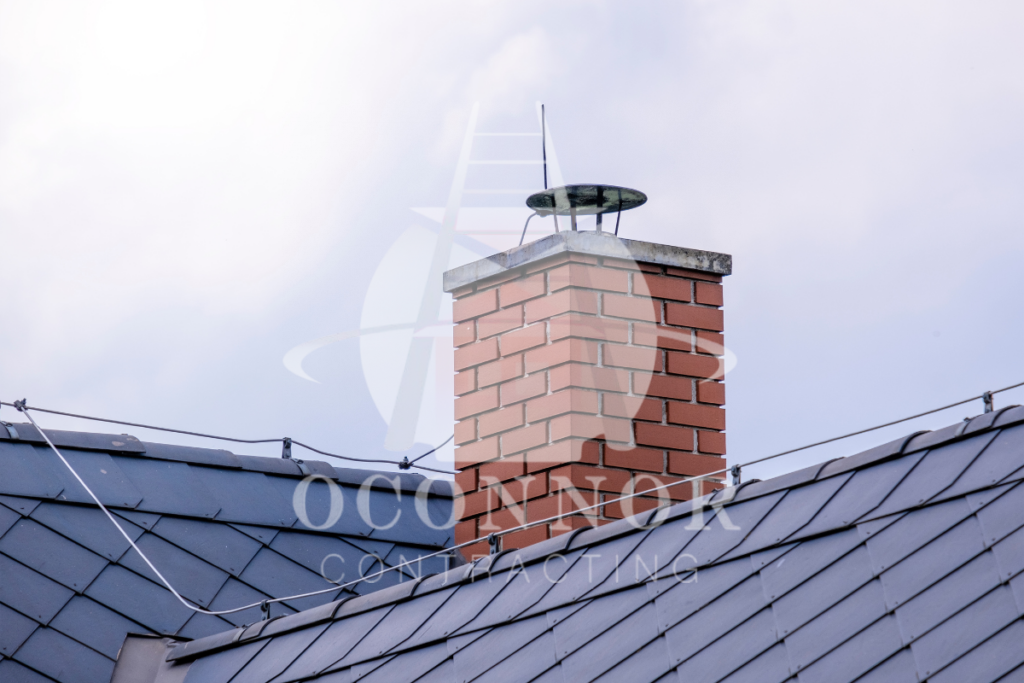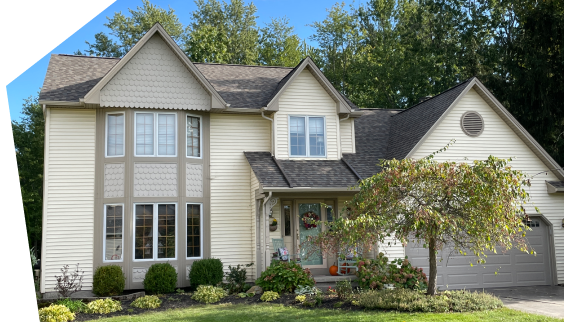Regardless of the season, a cozy fireside adds an irresistible charm to homes. Yet, like all aspects of your property, chimneys need regular care and maintenance. A faded or damaged chimney doesn’t just take away from your home’s aesthetic appeal, but it can also pose safety hazards if not addressed promptly.
So if you are facing issues and are wondering how to repair a chimney, then you are in the right place. This guide is designed to arm you with knowledge about common problems that can damage your chimney and effective ways to tackle them.
Signs Your Chimney Needs Repair
There is nothing quite like the warm and inviting ambiance of a well-maintained fireplace. However, understanding when your chimney requires repair is crucial to maintaining this comforting atmosphere while ensuring the safety of your home.
Warning Signs to Look Out For
Let’s start by discussing some recognizable signs that you need to consider chimney repair:
- Cracks in the Flue or Brickwork: You might notice visible cracks in the chimney, which also signal potential internal damage so it’s essential to schedule a professional inspection.
- Chimney Crown Damage: If there are chips or cracks on the crown, the top part of the chimney, it may allow water into your home that causes significant damage over time.
- White Staining: Known as efflorescence, white staining indicates excessive moisture in the masonry, which can lead to more serious issues if not addressed.
- Rust on Firebox or Damper: Rust is a clear sign that your chimney needs repairs, as it’s likely that water is entering your chimney.
- Smoky Fires or Difficulty Starting Fires: Increased smoke indoors can suggest an issue with ventilation, while difficulty lighting fires might indicate blockages within the flue system, necessitating immediate attention.
Being conscious of these symptoms will guide you when professional help becomes necessary. This can also help in addressing any minor problems before they escalate into major ones – prolonging your chimney’s lifespan and keeping it functioning optimally.

How To Repair Your Chimney
Now that we know about the signs you need to look for, let’s move to the main topic of our blog post. In this section, we will go over how you can take care of these signs. So let’s get started.
How To Repair A Chimney Crack
Chimney cracks are one of the most common issues you can encounter, especially with masonry chimneys.
There are a few types of cracks, including vertical, horizontal, and stair step cracks. For vertical and horizontal cracks that are smaller in size, you can properly seal the area. High-quality caulks available online or in stores can do the job, and you can also use other mortar repair products.
However, larger cracks, such as stair step cracks, require more work, and you might need to reinforce the chimney with the help of steel lintels so that it doesn’t lose strength.
A great preventive measure can be using steel liners. The liner acts as a barrier, it helps prevent the deterioration of bricks, mortar, or other materials within the chimney. However, note that in such cases it is best that you hire a professional contractor for help.
How To Fix Chimney Spalling
Chimney spalling refers to the flaking, chipping, or deterioration of bricks or masonry on the exterior surface of the chimney.
To repair spalling keep in mind the following steps:
- Removal of Damaged Material: Carefully remove the damaged bricks or masonry affected by spalling.
- Cleaning and Surface Preparation: Thoroughly clean the affected area to eliminate loose debris and create a clean, sound surface for repair.
- Installation of New Material: Install new bricks or masonry that match the existing ones using appropriate mortar.
- Application of Protective Coatings: Apply protective coatings or sealants to prevent future moisture infiltration and safeguard the repaired area.
How To Repair the Chimney Crown
As the name suggests, a chimney cap or crown is the topmost part of the chimney. It is a crucial protective element atop the chimney, shielding it from moisture, debris, and external elements. When a chimney cap is damaged, it exposes the chimney’s interior to potential water infiltration.
If there are minor cracks or deterioration, you can opt for a DIY repair using a waterproof sealant or chimney crown repair product. Elastomeric sealants, which are known for their resistance to changes in temperature, are a good option.
In the case of severe damage, waterproofing techniques may not be enough, and you may need to hire a roofer to install a new crown.
How to Address Chimney Leaks
Leaks are a homeowner’s nightmare, whether it be from the roof or chimney. As we have discussed, chimney cracks can let in water and moisture. Leaks can occur due to several reasons, one of which is damaged flashing. When chimney flashing becomes damaged, improperly installed, or deteriorates over time, it can also lead to water seepage into your home. To stop this, it’s important to reseal or replace the chimney flashing as soon as possible to avoid further issues.
Treating White Staining/Efflorescence
As we have covered above, white staining on the chimney can reduce the curb appeal of the roof. Treating white staining or efflorescence on a chimney’s surface is crucial to maintaining not only its appearance but also its structural integrity.
Here is how to treat efflorescence:
Identify and Address Moisture Sources:
Investigate leaks and ensure proper sealing to prevent water seepage, then thoroughly clean the affected area with a mild detergent solution.
Apply Efflorescence Cleaner:
Use specialized cleaners following product instructions, consider stronger methods for persistent stains, and implement preventive measures like waterproof sealants to avoid recurrence.
Leaning Chimney Repair
Just as straightening a crooked structure is vital for stability, fixing a leaning chimney ensures it stands tall and sturdy, maintaining its function.
The repair process might involve stabilizing the chimney by reinforcing its foundation, straightening the structure, and securing it in place to prevent future leaning. Techniques such as underpinning, installing support brackets or anchors, or rebuilding portions of the chimney might be employed to ensure its stability.
Repairing a leaning chimney stack not only restores its upright position but also ensures its safety, functionality, and longevity.
How Much Does Chimney Repair Cost In 2024?
When facing chimney problems, the thought of repair costs can cause anxiety for homeowners. Rest assured, though, understanding these expenses can enable better budgeting and take away the stress. To give you some respite, masonry chimney repair is not as expensive as roof repair.
The cost for chimney repairs largely depends on the chimney type (masonry or metal chimney), extent of damage, and geographical location. Every job is unique and requires a different set of skills, materials, and tools, which greatly influence cost estimates. As someone who’s been in the industry for years, I’ll try to offer you a general idea based on common repair categories.
Basic chimney sweeps or cleaning tasks are generally less expensive, ranging from $100 to $300, depending on the complexity of the job. For repairs, expect to pay a few hundred dollars. On the other hand, full-fledged reconstruction projects, necessary for severe damage or instability, vary widely in cost, starting at around $1,000 and potentially exceeding $10,000.
Remember, regular inspections and timely repairs can save you money on addressing major damage down the line.

The Importance of Regular Chimney Inspections
No matter how well-versed you may be in detecting warning signs, identifying many subtle problems still requires an expert eye. That’s why for something as vital as chimneys, regular inspections should never be overlooked or underestimated. Inspections are one of the ways you can prevent costly chimney repairs in the future as they help you stay on top of repairs and maintenance.
Moreover, the frequency of checks should correlate with how often you use your fireplace. For instance, a yearly inspection is standard for chimneys used regularly in the winter.
However, if infrequently used, scheduling an inspection every other year also suffices.
Ultimately, these occasional checks are crucial for preventing major repairs while ensuring safety and increasing efficiency.
Being well-informed about the signs and preventive measures hopefully equips you to better maintain your chimney, not just decoratively but functionally as well.
Need Help With Chimney Repair? OConnor Contracting Is Here To Help!
To sum up, today we covered the crucial signs of chimney damage and how you can go about repairing different chimney problems. But as you can see, for most of the issues it is important to call a professional for help.
If your chimney needs to be repaired, call the team of OConnor Contracting. We are a premier roofing company serving Western New York. Along with chimney repair, we also offer roofing services, including new installations, inspections, and routine maintenance. Call us today to schedule a free consultation with our experts.


